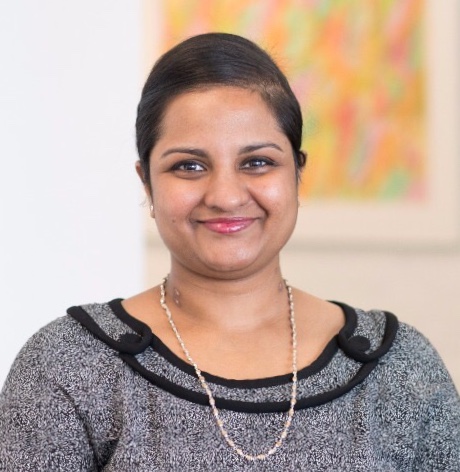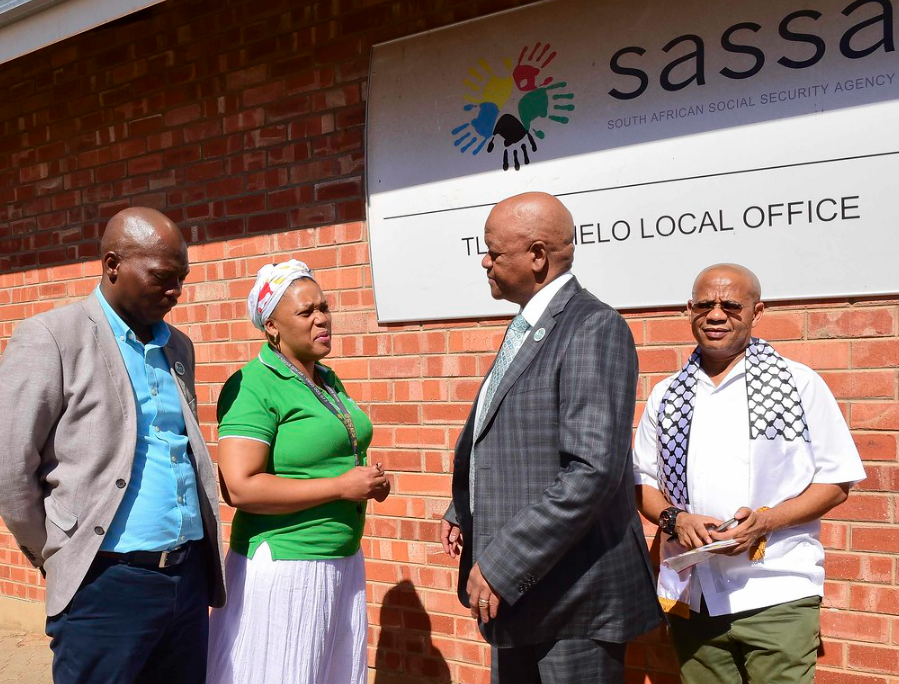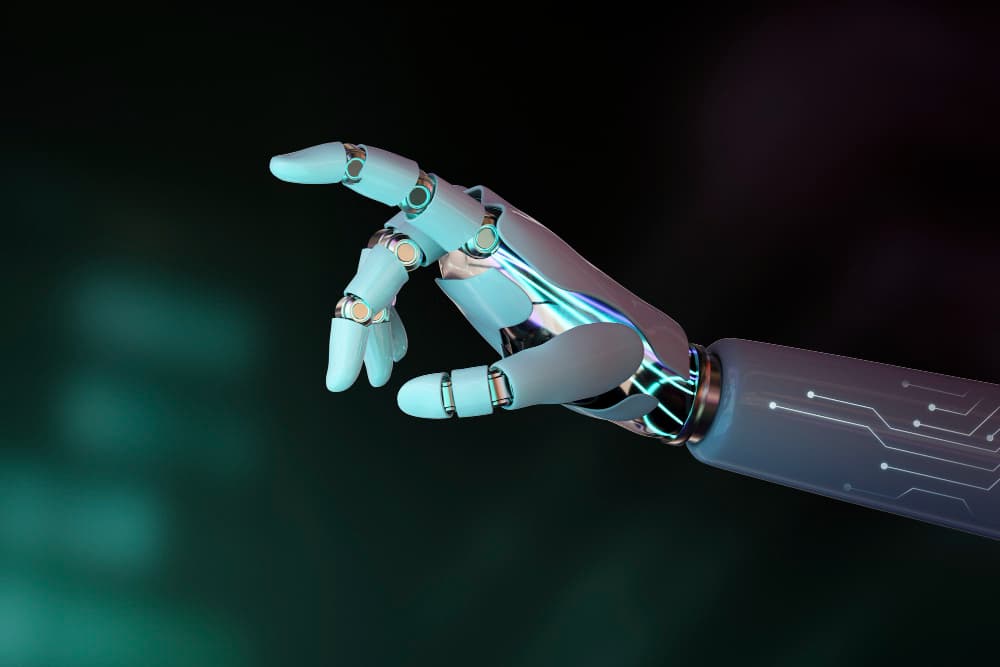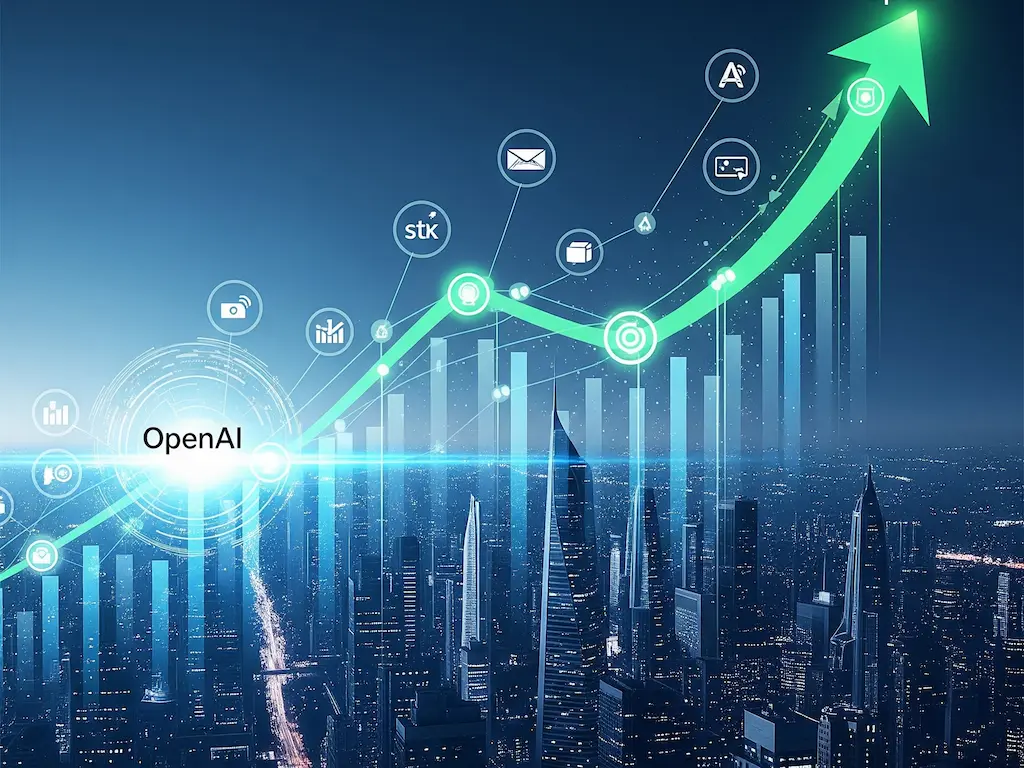In the rapidly evolving landscape of artificial intelligence and data analytics, few leaders possess the rare combination of technical expertise, strategic vision, and human-centered approach that defines true transformation. While many executives talk about digital transformation, Su Jella has spent over 15 years actually delivering it, building scalable data capabilities from the ground up, empowering teams across industries, and proving that the most powerful innovations happen when cutting-edge technology meets compassionate leadership.
From her base in Melbourne, this award-winning global executive has redefined what it means to be a data leader in the AI era. She doesn’t just implement technologies; she architects entire ecosystems of human potential augmented by intelligent systems. Her approach transcends traditional boundaries between technical and business domains, creating a new paradigm where data becomes not only an asset, but a strategic decision-driver that transforms organisations from the inside out.
From Market Research to AI Visionary: A Journey of Continuous Evolution
Su Jella’s journey into the world of data and AI began in an unexpected place: market research. “With over 15 years of expertise in data-driven leadership, my career began in Market Research, where I mastered the art of transforming raw data into actionable insights, guiding critical decisions on customers, products, and enterprise strategies,” she reflects. This foundation would prove instrumental in shaping her unique leadership philosophy.
What sets Su apart from conventional data leaders is her ability to see patterns where others see chaos, to identify opportunities where others see obstacles. “As an analyst, I honed my ability to decode complex business challenges into strategic opportunities, driving measurable impact through advanced analytics and AI,” she explains. This hands-on experience taught her something crucial that many executives miss: the difference between collecting data and creating meaningful transformation.
Her evolution from analyst to visionary leader wasn’t just about climbing the corporate ladder, it was about recognizing that the most powerful insights come from understanding the human story behind the numbers. “This hands-on experience allowed me to pinpoint executional gaps and architect enterprise-wide transformation, designing data-led roadmaps that empower organisations to optimize operations, unlock growth, and future-proof their foundations.”
Digital Dexterity: The Art of Anticipating Disruption
In a field where yesterday’s breakthrough becomes tomorrow’s baseline, Su has mastered what she calls “digital dexterity,” the ability to not just adapt to change, but to anticipate and architect it. “Digital dexterity is not just about adopting new technologies, but cultivating an agile mindset that anticipates disruption and transforms it into opportunity,” she explains.
Her approach to staying ahead of emerging technologies reveals the systematic thinking that drives her success. She dedicates structured time to exploring emerging trends through continuous learning ecosystems, leads innovation sprints within her teams, and engages in global thought leadership as a frequent speaker at data, AI, and tech events. Most telling is that she practices what she calls “reverse mentorship,” actively seeking insights from early-career technologists on her team.
“Their fluency in emerging tools and languages often reveals blind spots in legacy approaches,” Su notes. “This systematic approach ensures I don’t just track trends, but architect them into actionable strategies that can have meaningful outcomes in organisations.”
This philosophy has made her not just a consumer of innovation, but a creator of it, someone who doesn’t wait for the future to arrive, but actively builds it.
Transforming Data from Asset to Strategic Driver
The fundamental challenge facing most organisations today isn’t a lack of data, it’s knowing how to transform that data from a passive asset into an active driver of smarter business decisions. Su has cracked this code through what she describes as intentional cultural, operational, and technological transformation.
“There is a need to shift from viewing data as a passive asset to a strategic decision-driver and it requires intentional cultural, operational, and technological transformation,” she explains. Her approach centres on five critical levers: leadership as storytellers, embedding decision intelligence in processes, democratizing data with guardrails, measuring what matters, and fostering a fail-forward culture.
The storytelling aspect is particularly crucial. “Executives need to model data-driven behavior by leveraging evidence-based tactics and hypothesis testing. I’ve coached C-suites to demand data narratives (not just dashboards) that tie insights to P&L outcomes.” This approach transforms data from abstract numbers into compelling business narratives that drive action.
Perhaps most importantly, Su emphasizes the human element in data transformation. “It is absolutely essential to provide enablement, frameworks and guardrails to teams on using and managing data and AI. This is every team member’s responsibility in an organization.” She’s learned that the most successful data transformations happen when everyone, not just technical experts, becomes a data steward.
The Reward of Meaningful Impact
When asked about the most rewarding aspect of her work, Su’s response reveals the deeper purpose driving her technical expertise. “The greatest reward lies in transforming raw data into meaningful insights that drive impactful actions. Organisations collect vast amounts of data, but the true value comes from uncovering the story behind the numbers, turning information into actionable knowledge that shapes strategy, optimizes operations, and delivers measurable results.”
Her satisfaction extends beyond commercial success to encompass ethical and social benefits. “Beyond commercial success, I find deep satisfaction in the ethical and social benefits of responsible data use. When used thoughtfully, data can foster stronger customer relationships, enhance user experiences, and even address societal challenges.” This perspective, viewing data as a tool for purpose, not just profit, distinguishes Su’s approach from purely technical implementations.
She’s witnessed firsthand how data-driven confidence transforms organisations. “Seeing businesses move from intuition to data-driven confidence is incredibly fulfilling. Whether it’s identifying untapped customer needs, refining products based on real-time feedback, or anticipating market shifts before they happen, data empowers organisations to act with precision and agility.”
AI as Human Augmentation, Not Replacement
Su’s philosophy on artificial intelligence challenges the common narrative of human versus machine. Instead, she advocates for a model of collaboration and augmentation. “AI’s greatest value lies in augmenting human potential, eliminating inefficiencies, automating repetitive tasks, and providing more time for strategic thinking and innovation. Rather than replacing human judgment, AI acts as a force multiplier.”
Her most transformative example demonstrates this philosophy in action. “The most transformative example I’ve seen (and implemented) is using AI to humanize B2B relationships at scale. By combining an organization’s deep customer insights with AI-powered recommendation engines, I delivered a project that created hyper-personalized engagement strategies.” The result was a blend of data-driven precision and human touch that strengthened trust, deepened client relationships, and unlocked new commercial opportunities.
This approach, using AI to enhance rather than replace human connection, represents a fundamental shift in how organisations can think about automation and efficiency.
Turning Challenges into Discovery Opportunities
Su’s ability to transform business challenges into opportunities for discovery is perhaps best illustrated through a project that addressed scaling customer experience amid rising feedback volumes. The challenge was clear: customers were sharing valuable insights across multiple channels, but the organization lacked a systematic way to analyze this data at speed.
“I led the development of an AI-powered CX engine using Natural Language Processing (NLP) to automate sentiment analysis and thematic clustering of customer feedback,” she explains. The solution processed feedback in real-time, cutting manual analysis time by 80%, uncovered hidden pain points that directly informed product roadmap prioritization, and boosted Customer Effort Scores by 30%.
But the real innovation was creating what Su calls “a self-reinforcing loop of insights.” The engine generated over 1 million structured customer data records, revealed unmet market needs that aligned with social impact goals, and proved that AI could humanize customer experience at scale. “This transformation showed how data and AI don’t just solve operational challenges, they uncover opportunities to deliver value for customers and the business simultaneously.”
Aligning Data Strategy with Business Objectives
One of Su’s core strengths lies in ensuring that sophisticated analytics directly advance business objectives. “Data is only valuable when it directly advances business objectives. To ensure alignment, I start by bridging the gap between data initiatives and strategic priorities, because even the most sophisticated analytics are meaningless if they don’t address core business challenges.”
Her approach with C-suite executives is methodical and strategic. She starts with the “why,” connecting data to business outcomes upfront and clarifying what specific problems are being solved. She translates data into strategic language, framing insights as actionable business levers and building narratives that show how data directly supports executive priorities.
“I frame insights as actionable business levers,” she explains. “For example, ‘This churn prediction model can recover $X in revenue if we act on at-risk customers.’” This approach transforms data from a technical curiosity into a strategic asset that executives can understand and act upon.
The collaboration aspect is equally important. “I co-create KPIs, partnering with executives to define success metrics that matter to their goals. CFOs care about ROI; CMOs about customer LTV.” By democratizing insights through self-service tools and tailored dashboards, she enables leaders to explore data in the context of their specific decisions.
Leadership in the Age of AI: Balancing Innovation with Humanity
Su’s perspective on leadership in data and AI reflects her deep understanding that technical excellence alone is insufficient for driving meaningful change. “Leading in data and AI requires a unique blend of technical expertise and people-centric leadership to drive innovation,” she observes.
Her leadership philosophy centres on five critical qualities. Visionary resilience allows leaders to persist through setbacks while maintaining a clear vision of long-term impact. Translational expertise enables them to bridge technical and business worlds, simplifying complex concepts into strategic outcomes. An experimental mindset creates opportunities for bold ideas through hackathons and sandbox environments, backed by tangible resource allocation.
Perhaps most importantly, Su emphasizes empathetic influence. “Stakeholder buy-in is won through continuous engagement, aligning AI initiatives to departmental goals. They lead with curiosity, asking ‘What problem are we really solving?’ to ground tech in human needs.” This human-centred approach ensures that innovation serves real needs rather than pursuing technology for its own sake.
Strategic execution ties everything together, prioritizing use cases that balance innovation with ROI and measuring progress through both technical metrics and business impact.
Industry-Specific Challenges and Universal Solutions
With experience across various sectors, Su has identified both universal challenges and industry-specific hurdles in implementing data-driven strategies. “While the core challenge of transforming raw data into actionable insights is universal, each industry presents unique hurdles in execution,” she notes.
The ROI paradox affects all organisations, justifying upfront investments in data infrastructure when returns often lag 12-18 months. Data quality realities present another universal challenge, as most organisations inherit fragmented, unclean data, though consequences vary by industry and risk appetite.
Her solution framework addresses these challenges through a three-pronged approach: quick wins that build trust, quality foundations with industry-specific data cleansing and standards, and strategic scaling that aligns use cases to sector-specific KPIs.
“The shared theme across industries is moving from ‘data as a report’ to ‘data as a decision tool,’” Su explains. “This requires cultural change that goes beyond technical implementation.”
Governance and Ethics: The Foundation of Sustainable Innovation
In today’s AI-driven landscape, Su recognises that robust governance isn’t optional, it’s the foundation for sustainable innovation. “My approach guides a balance on strategic oversight with ethical responsibility through three key pillars,” she explains.
Her proactive governance frameworks implement risk-weighted controls tailored to data sensitivity, establish clear ownership through RACI matrices for data decisions, and acknowledges that 60% of AI failures trace back to governance gaps. Ethics by design embeds bias testing into model development lifecycles and creates opportunities to stress-test AI systems for unintended consequences.
Transparency remains crucial. “I maintain ‘explainability logs’ documenting how training data was sourced and used, and provide plain-language disclosures to users about AI interactions, not buried in terms and conditions.” This approach recognises emerging standards like the EU AI Act’s requirement for fundamental rights impact assessments.
Su makes the compelling business case for governance: “While often viewed as overhead, strong governance prevents costly reputational damage, enables responsible innovation that attracts ethical investors, and builds customer trust. 87% of consumers demand more AI transparency.”
Empowering 10,000+ Professionals: The Art of Talent Development
Su’s impact extends far beyond individual organisations through her work empowering over 10,000 professionals through seminars, summits, conferences and workshops. Her approach to nurturing talent and driving data-enabled culture centres on five pillars that transform how organisations think about capability development.
Continuous learning as a core value implements upskilling through micro-courses and creates data hubs where teams solve real business problems with analytics. She creates opportunities for innovation by normalising retrospectives that extract lessons from unsuccessful experiments and celebrating learning outcomes, not just results.
Cross-functional talent ecosystems build teams combining deep data expertise with domain knowledge, while rotating analysts into business units breaks down silos. Her structured experimentation framework allocates innovation time for testing new tools and approaches, implementing governance through weekly demo days to share findings.
Perhaps most importantly, she emphasizes leadership by example. “Executives must publicly use data in decisions – eg: here’s the dashboard that guided this strategy,” she notes. “Leader KPIs need to be tied to team data literacy metrics to ensure accountability.”
Building Internal Capabilities: From Contractor Dependence to Self-Sufficiency
Su’s track record of maintaining teams with 80%+ internal talent while delivering against organisational demands demonstrates her commitment to building sustainable capabilities. Her approach to reducing external contractor dependency, centres on strategic upskilling programs, business-aligned development, and protecting institutional knowledge.
“I replaced at least $2M per year in analytics contractors by implementing Data Accelerator programs that cross-trained engineers and analysts in adopting new tools, techniques, and technologies,” she explains. Her approach includes creating internal certification opportunities and pairing analysts with contractors in mentorship models focused on company-specific use cases.
The strategic advantage of this approach extends beyond cost savings. “This enabled embedded partnerships with business units and improved data quality frameworks by creating consistent ownership,” Su notes. The result is organisations are more resilient, agile, and capable of rapid innovation.
Diversity and Inclusion: Technical Requirements for Effective AI
Su’s advocacy for diversity and inclusion goes beyond ethical imperatives to technical requirements. “Diversity and inclusion aren’t just ethical imperatives, they’re technical requirements for building effective AI systems and data capabilities,” she explains. “Homogeneous teams create blind spots that lead to biased models and failed deployments.”
Her operationalisation of these values includes building inclusive AI systems through mandatory bias testing frameworks, creating diverse data teams with no homogeneous interview panels, and launching graduate programs that harness the latest skills in tech and data.
Her approach transforms inclusion from aspiration to measurable technical practice. “I’ve developed D&I training specifically for data analysts and scientists and serve on various data and AI committees and boards,” she shares. The results speak for themselves: more robust models and solutions that work for diverse organisations and teams.
Balancing Technical Expertise with Human Insights
The art and science of effective data leadership lies in balancing technical expertise with human insights. Su’s approach centres on three key principles that transform data from abstract concept to tangible decision-making partner.
Contextual translation employs a “ladder of resonance” technique, starting with business impact and using analogies tailored to specific audiences. Decision-focused storytelling structures deliverables as executive briefs, translates concepts into language understood by non-technical audiences, and provides interactive dashboards with deep-dive appendices for technical stakeholders.
Her “Three Lens” framework for human-centred validation asks: Can the data be validated? Can this be implemented? Can this be trusted and adopted? “This approach transforms data from an abstract concept to a tangible decision-making partner at every organizational level,” Su explains.
Overcoming Organisational Hurdles in AI and Data Capability Building
From her experience leading data transformations across industries, Su has identified fundamental challenges that organisations face when building data and AI capabilities. Infrastructure debt affects 70% of enterprises struggling with fragmented data systems, which she addresses through “data mesh” approaches that incrementally modernise infrastructure while delivering quick wins.
Misaligned investment cycles, where leadership expects AI ROI in quarters when capabilities take years to mature, are addressed through blended business cases pairing short-term automation wins with long-term strategic AI roadmaps. Legacy system lock-in traps critical processes in outdated mainframes, which she solves through “wrapper” APIs that expose legacy data to modern tools without risky rewrites.
Operating model inertia, where teams are organised around reports rather than insights, is overcome by restructuring into embedded “data trios” consisting of analyst, engineer, and product owner. Vendor hype cycles, where expensive platforms sit unused, are prevented through mandatory trials proving business impact before procurement.
“The key is treating these as transformation opportunities, not just technical problems,” Su emphasises.
Mentoring Women in STEM: Building Tomorrow’s Leaders
Su’s approach to mentoring women in STEM recognises that every woman’s journey is unique, whether she’s a student exploring options or a professional pivoting into tech. Her multi-generational mentorship leads STEM communities pairing established professionals with women at career inflection points and supports women returning to work programs after career breaks.
Through her contributions to “The AI Revolution” (co-authored book) and speaking engagements, she demystifies STEM pathways by showcasing the diversity of roles beyond coding and demonstrating how transferable skills from “non-technical” fields create unique value. Her vision for building career on-ramps includes partnering with companies to create micro-credentialing programs for mid-career transitions and “STEM Try-On” internships for women exploring tech.
“My vision is a tech landscape where women see STEM as their domain, diversity of thought drives innovation, and ‘technical’ means collaborative problem-solving,” she explains. “By making STEM accessible and showing its human side, we’re not just changing individual trajectories, we’re transforming entire industries. The AI revolution needs diverse perspectives at every stage, from algorithm design to governance and execution.”
The Future of Data and AI: Human-AI Symbiosis
Su’s excitement about the future of data and AI centres on its potential to amplify human potential while solving humanity’s greatest challenges. “What truly energises me is AI’s potential to amplify human potential while solving our greatest challenges. We’re entering an era where human-AI symbiosis will redefine work.”
She envisions cognitive teammates that help teachers personalise learning for students simultaneously and enable engineers to simulate climate solutions in days instead of years. Sustainability becomes algorithmically possible through AI that optimises energy grids in real-time and accelerates materials science for carbon capture technologies.
Healthcare’s renaissance will feature AI-assisted drug discovery cutting development time from years to months, wearables that predict health issues before symptoms appear, and digital twins allowing personalised treatment modelling.
“What excites me most isn’t just the technology, but our growing recognition that ethical AI frameworks must keep pace with capability, the greatest innovations will balance profit and purpose, and diversity in development teams leads to more robust solutions,” Su reflects.
Her vision for the next 5-10 years includes AI becoming as ubiquitous as electricity, businesses measuring success through both financial and impact metrics, and a new generation of translator leaders who bridge technical and human realms.
“The future isn’t about humans versus AI, but humans with AI, and that collaboration holds extraordinary promise.”
A Legacy of Transformation
Su Jella represents a new breed of technology leader, one who understands that the most powerful innovations happen not when we replace human capabilities with artificial ones, but when we amplify human potential through intelligent collaboration. Her journey from market research analyst to global data and AI visionary demonstrates that the future belongs to those who can bridge technical excellence with human insight, strategic thinking with ethical responsibility, and individual achievement with collective empowerment.
In an age where artificial intelligence threatens to commoditise human capabilities, Su has proven that the most valuable skill is the ability to make technology more human, not the other way around. Her work doesn’t just transform organisations, it transforms the very relationship between humans and technology, creating a future where both can thrive together.
As she continues to shape the next generation of data and AI leaders, Su Jella’s impact extends far beyond any single organisation or industry. She’s building a future where technology serves humanity’s highest aspirations, where data drives not just better decisions but better outcomes for all, and where the promise of artificial intelligence is fulfilled through fundamentally human values of collaboration, inclusion, and shared prosperity.







